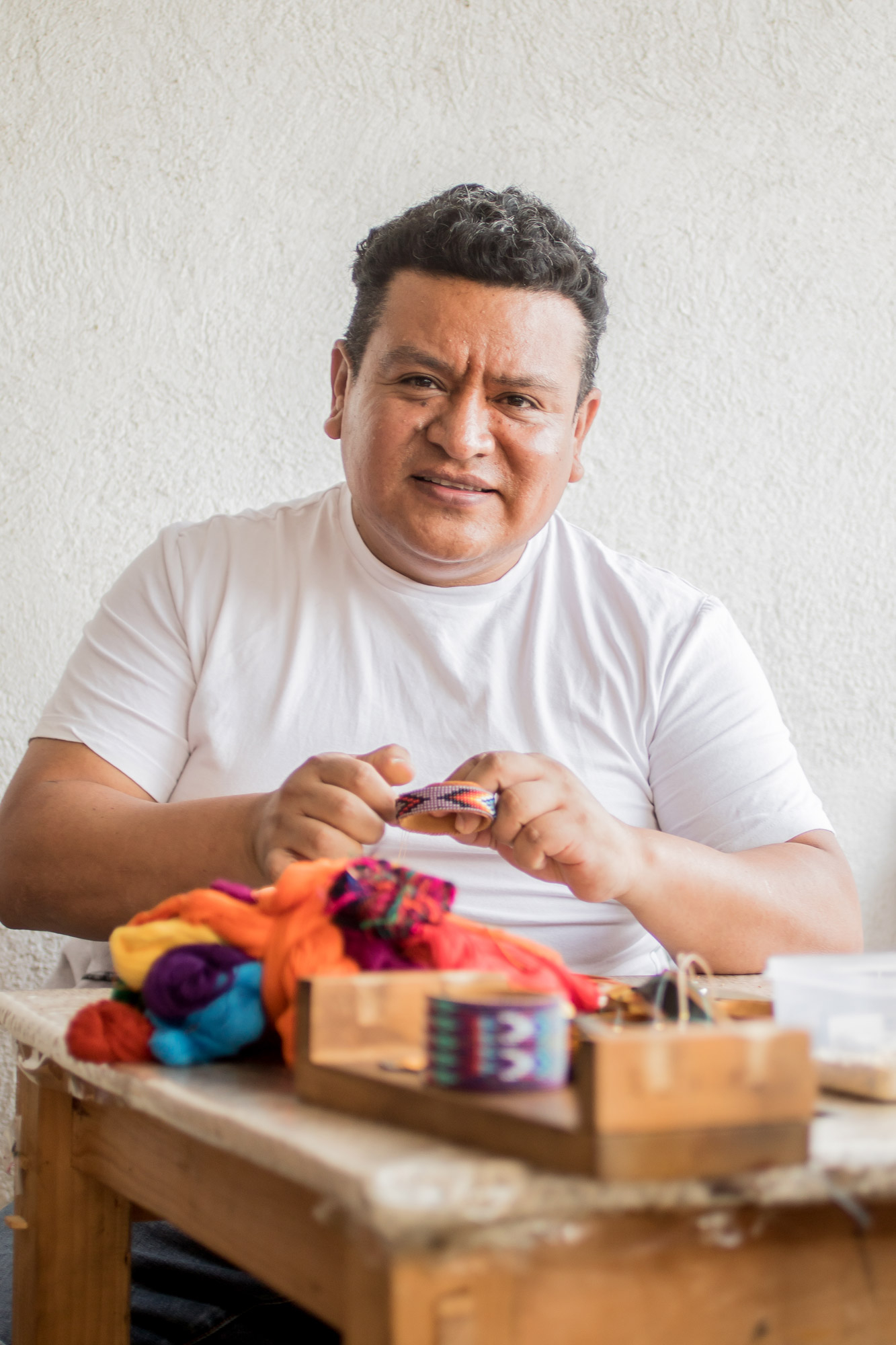Alvaro Ratzan

Artisan Organization: Alvaro Ratzan
Country: Central America
"I am Alvaro Ratzán. I was born in 1980 in the municipality of Santiago Atitlán, in the department of Sololá. We are a family of 5 brothers. I grew up in a humble home. From a very young age, I saw my parents dedicate themselves to crafts. In the eighties, my mother was the first to start making and selling macramé bracelets in the town. My father was a farmer and painter who later became interested in what my mother did, and so both began to work in crafts.
"Over the years, after school, as part of the housework, I always helped my parents to make bracelets or accompanied them to sell handicrafts in Panajachel (the most touristed town in the area). I kept up that routine until I graduated. After graduating I continued to work full-time together with my father until his last days.
"My interest began when I realized that craftsmanship is an art and therefore requires more technical work, starting with the issues of quality, colors and composition. Today I have a workshop where we have a production chain, from the design of accessories to the presentation of the final product. I remember that my first work was a macramé bracelet. I felt so excited and proud that my work generated money.
"Over time, after a lot of success with sales, difficult times came. That happened to all of us who sold products made of mostacilla (glass beads) because many of the products that were in the market looked pretty and colorful, but they were not of good quality. Many of the buyers had the problem that the pieces were frayed or faded, so they stopped buying. We had very large losses, and customers were distrustful of the products. We had already made investments in the business and that's when we realized that we had to make quality products.
"The art that I do is related to the tradition of the town. For each festivity that takes place, the women dedicate themselves to making their hüipiles (Mayan blouses) with hand embroidery. First, the fabric is woven on a backstrap loom and then they adorn them with hand embroidery like birds, flowers, geometric figures, Mayan figures, etc. We use these techniques in the elaboration of our products. We use the fabrics woven on a waist loom in our bracelets and we also use the mostacilla embroidery technique.
"I work with my family. I design, then my sister is in charge of production, looking for artisans and distributing the raw material for the elaboration of the product. We have an artisan who prepares the sample of each product, and then I have another artisan who distributes it to other people who are responsible for making all the products.
"When I think about my dreams, I seek to be able to support many artisans so that they can have a decent salary. I hope that one day people will buy artisan products for their quality, for their art, since they are made with great care, hope and love and because each artisan is sacrificing to make each product. Artisans inspire me. Seeing people happy with their work is a satisfaction that cannot be explained in words, it just feels good and fills you with energy.
"A handmade product is not simply a product but it carries a set of feelings, emotions, values and time. When purchasing any product you take a part of the life of each artisan; that makes each product valuable.
"I thank Novica and its clients for making it possible for artisans to show the world their arts that they make with a lot of effort, with fair and reasonable value. As an artisan, they inspire me to keep going. There is a phrase that motivates me every day, and it is 'God blesses us to bless others'." "


